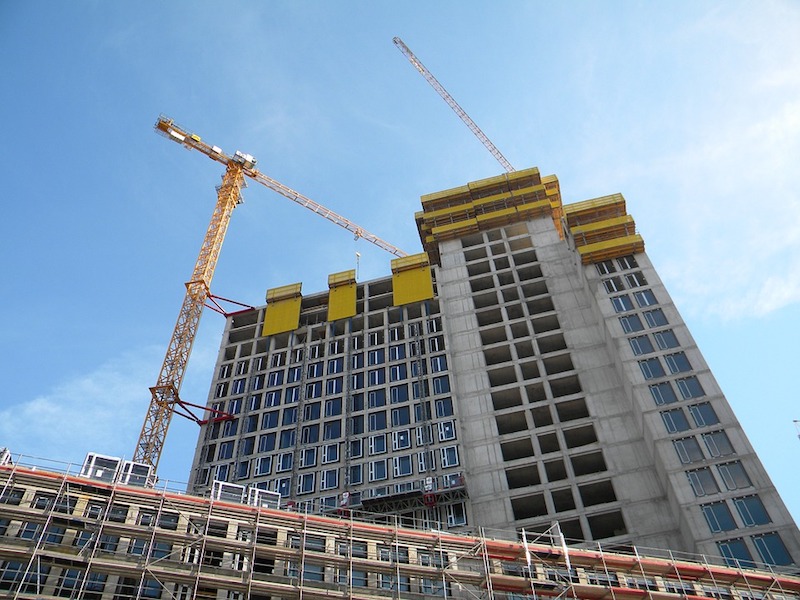Coming off a record-setting year for the nonresidential construction industry (more than $760 billion was spent on new construction and renovation work nationwide last year), AEC firm leaders should be brimming with confidence over the growth potential for their firms heading into 2019. The arrow is pointing up for nearly all building sectors, construction backlogs remain healthy, and architecture firms continue to see strong demand for their design services, according to AIA and ABC data.
Yet despite the positive indicators for the market, AEC professionals remain largely cautious when it comes to growth prospects for 2019. In October, BD+C surveyed 314 readers about their thoughts on a variety of issues: materials prices, bid prices, obstacles to growth, emerging opportunities, etc. Only slightly more than half (56.0%) of industry professionals expect higher revenue for their firm in 2018 compared to last year. More surprisingly, 13.4% are forecasting a decrease in revenue.
And their forecast for 2019 isn’t much rosier: 54.7% expect revenue to increase, 8.7% call for a drop, and 36.7% predict flat revenue this year. This is a markedly different sentiment than last year’s respondents, who were much more upbeat with their forecasts for the upcoming year: 62.0% predicted revenue to rise and only 6.1% called for it to drop.
When asked about their top concerns for 2019, the largest number of respondents cited “general economic conditions” (52.7%) as a key issue, followed by “competition from other firms” (41.0%) and “price increases in materials and services” (39.0%). In fact, nearly 90% of respondents anticipate construction materials prices to rise in 2019. That’s up from 86% in last year’s survey of BD+C readers.
See Also: And then there were two: HQ2 sites, in hindsight, seemed obvious
To help keep their project pipelines full through 2019, AEC firms are focusing on a number of business development strategies heading into this year. Selective hires (44.1%) and marketing/public relations efforts (42.2%) top the list, followed by investments in technology (39.0%), staff training/education (35.9%), and new services/business opportunities (29.2%).
Healthcare facilities and multifamily housing head the list of the hottest sectors heading into 2019, according to survey respondents. More than half (52.5%) indicated that the prospects for healthcare/hospital work were either “excellent” or “good” for 2019; 52.4% said the same for multifamily housing work. Other strong building sectors: senior/assisted living facilities (51.9%), office interiors/fitouts (46.9%), industrial/warehouse buildings (42.7%), hotel/hospitality developments (39.7%), university facilities (38.2%), government/military buildings (37.5%), and office buildings (37.4).
Related Stories
Codes and Standards | Oct 26, 2022
‘Landmark study’ offers key recommendations for design-build delivery
The ACEC Research Institute and the University of Colorado Boulder released what the White House called a “landmark study” on the design-build delivery method.
Building Team | Oct 26, 2022
The U.S. hotel construction pipeline shows positive growth year-over-year at Q3 2022 close
According to the third quarter Construction Pipeline Trend Report for the United States from Lodging Econometrics (LE), the U.S. construction pipeline stands at 5,317 projects/629,489 rooms, up 10% by projects and 6% rooms Year-Over-Year (YOY).
Data Centers | Oct 25, 2022
Virginia county moves to restrict the growth of new server farms
Loudoun County, Va., home to the largest data center cluster in the world known as Data Center Alley, recently took steps to prohibit the growth of new server farms in certain parts of the county.
Museums | Oct 25, 2022
Seattle Aquarium’s new Ocean Pavilion emphasizes human connection to oceans
Seattle Aquarium’s new Ocean Pavilion, currently under construction, features several exhibits that examine the human connection with the Earth’s oceans.
Energy-Efficient Design | Oct 24, 2022
Roadmap shows how federal buildings can reach zero embodied carbon emissions by 2050
The Rocky Mountain Institute (RMI) has released a roadmap that it says charts a path for federal buildings projects to achieve zero embodied carbon emissions by 2050.
Higher Education | Oct 24, 2022
Wellesley College science complex modernizes facility while preserving architectural heritage
A recently completed expansion and renovation of Wellesley College’s science complex yielded a modernized structure for 21st century STEM education while preserving important historical features.
Mixed-Use | Oct 20, 2022
ROI on resilient multifamily construction can be as high as 72%
A new study that measured the economic value of using FORTIFIED Multifamily, a voluntary beyond-code construction and re-roofing method developed by the Insurance Institute for Business & Home Safety (IBHS), found the return can be as high as 72%.
40 Under 40 | Oct 19, 2022
Meet the 40 Under 40 class of 2022
Each year, the editors of Building Design+Construction honor 40 architects engineers, contractors, and real estate developers as BD+C 40 Under 40 awards winners. These AEC professionals are recognized for their career achievements, passion for the AEC profession, involvement with AEC industry organizations, and service to their communities.
Designers | Oct 19, 2022
Architecture Billings Index moderates but remains healthy
For the twentieth consecutive month architecture firms reported increasing demand for design services in September, according to a new report today from The American Institute of Architects (AIA).
Building Team | Oct 18, 2022
Brasfield & Gorrie chairman’s home vandalized by anti-development activists
Activists vandalized the home and vehicles of Miller Gorrie, chairman of Birmingham-based Brasfield & Gorrie, in protest of a planned $90 million, 85-acre police, fire and public safety training center in Atlanta.

















